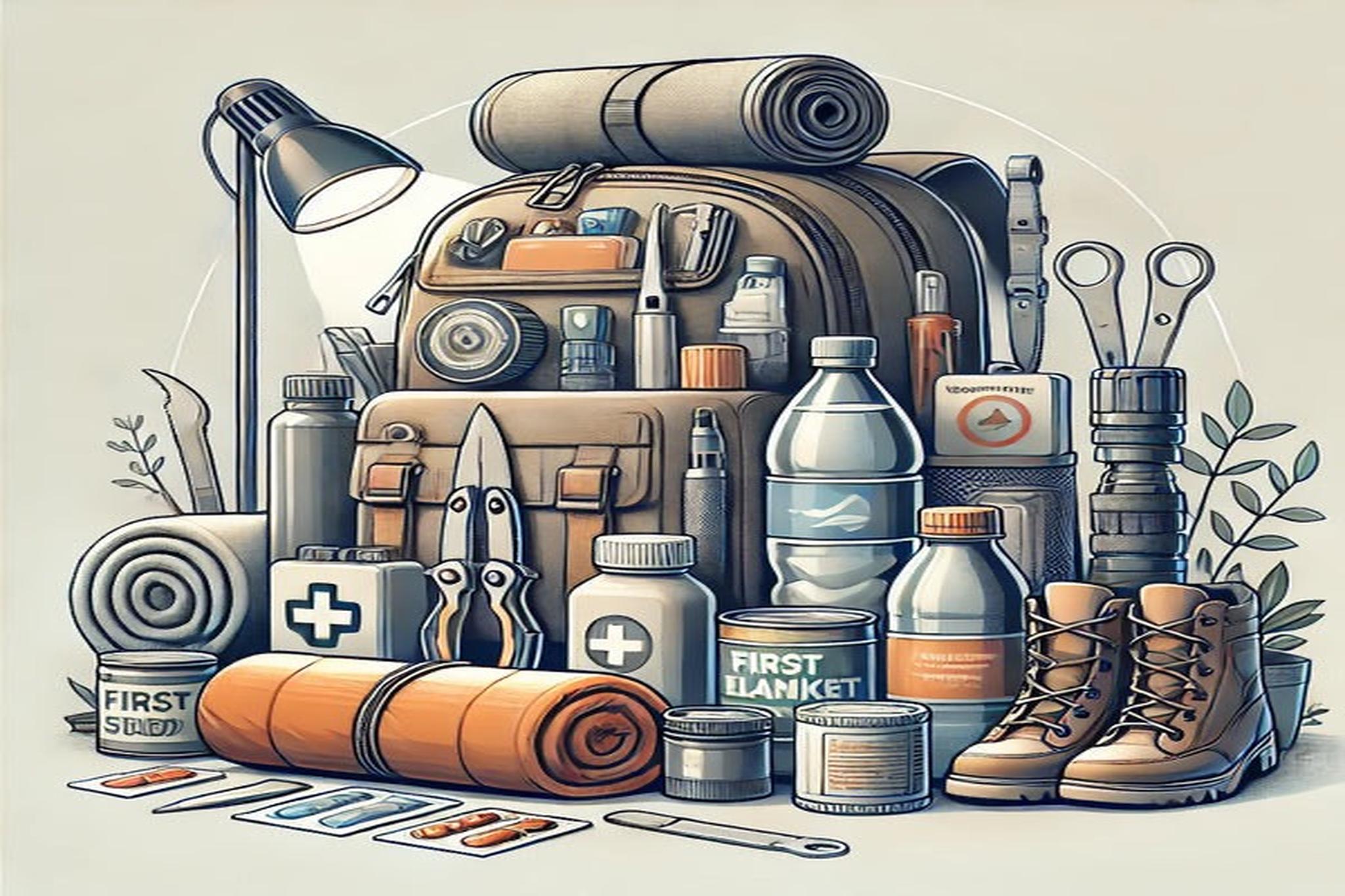The Shadow Prepper Emergency Kit Checklist
Posted on October 07 2024,
Emergencies can strike at any time, often without warning. Having a well-stocked emergency kit can make all the difference in staying safe and prepared. Whether you’re prepping for a natural disaster or planning for unexpected events, this comprehensive checklist will help you build the ultimate emergency kit to meet your needs.
Basic Survival Needs
Water
Water is the cornerstone of survival. Plan for one gallon of water per person per day for at least three days to cover drinking and sanitation needs. Buy and store it and turn it over as needed. For added preparedness, include:
-
LifeStraw Personal Water Filter: A portable filter for safe drinking water
- We buy cases of water at our local bulk store when they go on sale . We keep 3-5 cases rotating at all times for a small family. We also have three bigger 1-5 gallon bottles set aside per person primarily for hygiene
Food
Stock at least a three-day supply of non-perishable, easy-to-prepare food items. Consider working up to a seven day supply and eventually longer.
-
Canned goods, energy bars, jerky, rice and dried fruit
-
OXO Good Grips Manual Can Opener: Keep a can opener packed for emergencies
- Don't forget any specialty items for babies, toddlers, pets and the elderly. Some like to stock liquid nutritional supplement drinks. We recommend keeping a couple jars of garlic stored for cooking and health purposes
Shelter and Warmth
Essential Items
-
Swiss Safe Emergency Mylar Thermal Blankets: Retains body heat and provides protection from the elements
-
UST Tube Tarp and Camping Shelter: This is a pretty versatile shelter option
-
Hagon PRO Disposable Rain Ponchos: Stay dry in wet conditions, easy to pack and inexpensive
- Heavy duty work gloves
Health and First Aid
First Aid Kit
We recommend buying a complete kit and adding to it as you see fit. However, if you'd like to put one together yourself, here are the essentials to include:
-
Bandages, gauze and adhesive tape
-
Antiseptic wipes and ointment
-
Tweezers, scissors and safety pins
-
Pain relievers (e.g., ibuprofen, acetaminophen)
-
Prescription medications (7-day supply)
-
First Aid Only All-Purpose Kit: Here's a great comprehensive kit to handle common emergencies to get you started. Add to it as you read and learn more about staying healthy if help in unavailable.
Personal Hygiene Items
-
Hand Sanitizer
-
Travel Size Toiletry Kit includes many of the items we consider necessary
-
Plastic bags for waste disposal
- Toilet paper and tissues
Tools and Supplies
Multi-purpose Tool
-
Leatherman Wingman Multitool: Versatile and reliable. This is the one most peppers, campers and survivalist gurus like as an entry-level tool. There are many on the market, this is one of the best
Lighting and Power
-
GearLight LED Tactical Flashlight: Bright, durable, and long-lasting. An essential tool and one we recommend you start with for your kit.
-
FosPower Emergency Solar Hand Crank Radio: Stay informed with NOAA weather updates and additional broadcast information
-
Anker PowerCore 10000 Portable Charger: Keep your devices charged
-
Many like to include glow sticks in their kits. Again, they're an inexpensive option for those getting started and a reliable light source in emergencies: Cyalume SnapLight Emergency Glow Sticks
Fire Starting Tools
-
UCO Stormproof Match Kit: Waterproof matches that work in any condition
-
Bayite Survival Ferrocerium Fire Starter: Compact and durable fire starter
Basic Tools
-
PARACORD PLANET 550 Paracord: Strong and versatile
-
Crescent 170-Piece General Purpose Tool Set: An ideal set for handling various repairs and tasks
-
Whistle: Useful tool for communication and signaling for help
Personal and Important Items
Documentation
-
Copies of personal identification (ID, passport)
-
Insurance policies, medical records and emergency contacts
-
Cash (small bills and coins)
Comfort and Entertainment
-
Small games, playing cards, toys, a book
-
Photos or sentimental items
Clothing
-
One complete change of clothes per person, including sturdy shoes
-
Seasonal items (e.g., hats, gloves, thermal socks)
Special Considerations
For Babies and Toddlers
-
Formula, bottles, baby food and diapers
-
Blankets and extra clothing
For Pets
-
Food, water and bowls
-
Leash, carrier and waste bags
For Specific Needs
-
Mobility aids, hearing aids with extra batteries
-
Extra Glasses
Additional Useful Items
-
Maps of the local area - laminated or in waterproof bag
-
Emergency guide
-
Self defense items ie. pepper spray, etc...
Maintenance Tips
-
Check and refresh your kit every six months
-
Replace expired food, water and batteries
-
Customize your kit to meet local hazards and family needs
With this guide, you’re ready to build a practical and reliable emergency kit that provides peace of mind in any situation. Remember, preparation is the key to resilience.



0 comments